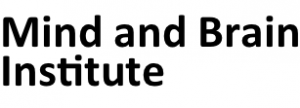A brief report from the 56th ACNP annual meeting in Palm Springs
The American College of Neuropsychopharmacology held its annual meeting between December 3rd and 7th, 2017, in Palm Springs, California. Here is a brief report of some of the meeting highlights.
Cannabis and cannabinoids
The “Neuropsychopharmacology Reviews Plenary” in the morning of the first day traditionally summarizes the major contents of the “Neuropsychopharmacology Reviews”, which is published annually. It deals with a current hot topic of neuropsychopharmacology. This year it is dedicated to “cannabis and cannabinoids”, which illustrates the growing importance of this topic, both with regard to the public health issues related to the legalization of cannabis in the US but also with regard to the potential of cannabinoids as treatments for neuropsychiatric and other disorders.
The prevalence of cannabis use disorder in the USA is 3.5% in males and 1.7% in females. It doubled in the last decade. If females consume cannabis, they get dependent more quickly. In female rats, cannabinoids are 2-3times more potent than in males. Human studies show that subjective effects of cannabis are stronger in females than in males, they are more sensitive to the effects of THC, and that therefore the abuse liability is much higher in females. Interestingly, THC elevates the pain threshold and increases pain tolerance in males only.
In that same symposium epidemiological data were shown that the THC content of cannabis increased by 300% between 1995 and 2014, from a mean of 4% to a mean of 12%. While depression and suicide are getting more and more prevalent in youth, cannabis use is not. The legalization of cannabis also did not change its use in youth, but cannabis use is higher in states with medical marihuana legalization (MML). After MML, the use increased in adults, and the prevalence in adults is rising more rapidly in states with MML than in states without MML.
New compounds
Valbenazine is an inhibitor of the vesicular monoamine transporter 2 (VMAT2). The compound is approved in the US for the treatment of tardive dyskinesia, and new data were shown that demonstrate its efficacy in this condition. Both 40 mg and 80 mg are effective, but after discontinuation of the drug tardive dyskinesia reoccurs. It was hypothesized that valbenazine causes less depression than tetrabenazine, which is approved in the EU and Germany. However, this has to be tested. At present, tetrabenazine seems to be a good treatment option for tardive dyskinesia.
Brexanolone is a GABA positive allosteric modulator, which is being tested for the treatment of postpartum depression (PPD) as SAGE-547 by the American company SAGE pharmaceuticals. Brexanolone is an intravenous preparation of the natural steroid allopregnanolone. It is synthesized from progesterone. At the meeting, two phase III studies were presented that show superiority of the compound over placebo in moderate to severe PPD.
“Precision medicine”
Tom Insel, the former director of the NIMH, repeated some of his ideas that I presented in this blog previously (e.g. in my post “Is psychiatry on the right track?”, currently no longer available). In brief, he diagnosed that public mental health is in a terrible condition (16.7% of all Americans are on a psychotropic drug according to Moore and Mattison, JAMA Int Med 2017, the “opioid epidemic” causes more deaths than AIDS in the 1980s, and suicide rates in young girls have tripled recently), and – according to Insel – part of the problem is that “we don`t measure enough and that we measure the wrong things”. His recipe to improve the situation is “Digital Phenotyping”, which he how tries to follow in his company “Mindstrong” (my report is here).
Ketamine for treatment-resistant depression and suicidality
At any psychiatric convention, the antidepressant and antisuicidal properties of ketamine are a major topic. In a symposium dedicated to ketamine, Dawn Ionescu from Massachusetts General Hospital presented a study of ketamine versus placebo for chronic suicidal ideation. Six infusions of ketamine or placebo were administered over three weeks in 13 patients per group. No significant difference between the two treatments was found, and there were only one and two, respectively, remitters the two groups. On the other hand, Michael Grunebaum from the New York State Psychiatric Institute presented a study of ketamine versus midazolam for the treatment of suicidal ideation. In this study, ketamine was superior to midazolam, and the effect of a single infusion was sustained for up to six weeks. This study is currently in press in the American Journal of Psychiatry.
Biomarkers for psychosis
In this interesting “Study Group” (a special format for strong interaction with the audience) the question was discussed whether biomarkers for psychosis are available and if they could improve drug development of antipsychotics. The short answer is that we are as close to any biomarker for psychosis as we were 20 years ago, and that the overlap in any biological parameter in schizophrenia between patients and controls is too profound to guide treatment. There were some voices in the audience that even pointed out that the approach of searching for a specific biomarker and its failure accelerated the withdrawal of industry from the field of CNS research, and that clinical trials should be exclusively guided by clinical experience.



